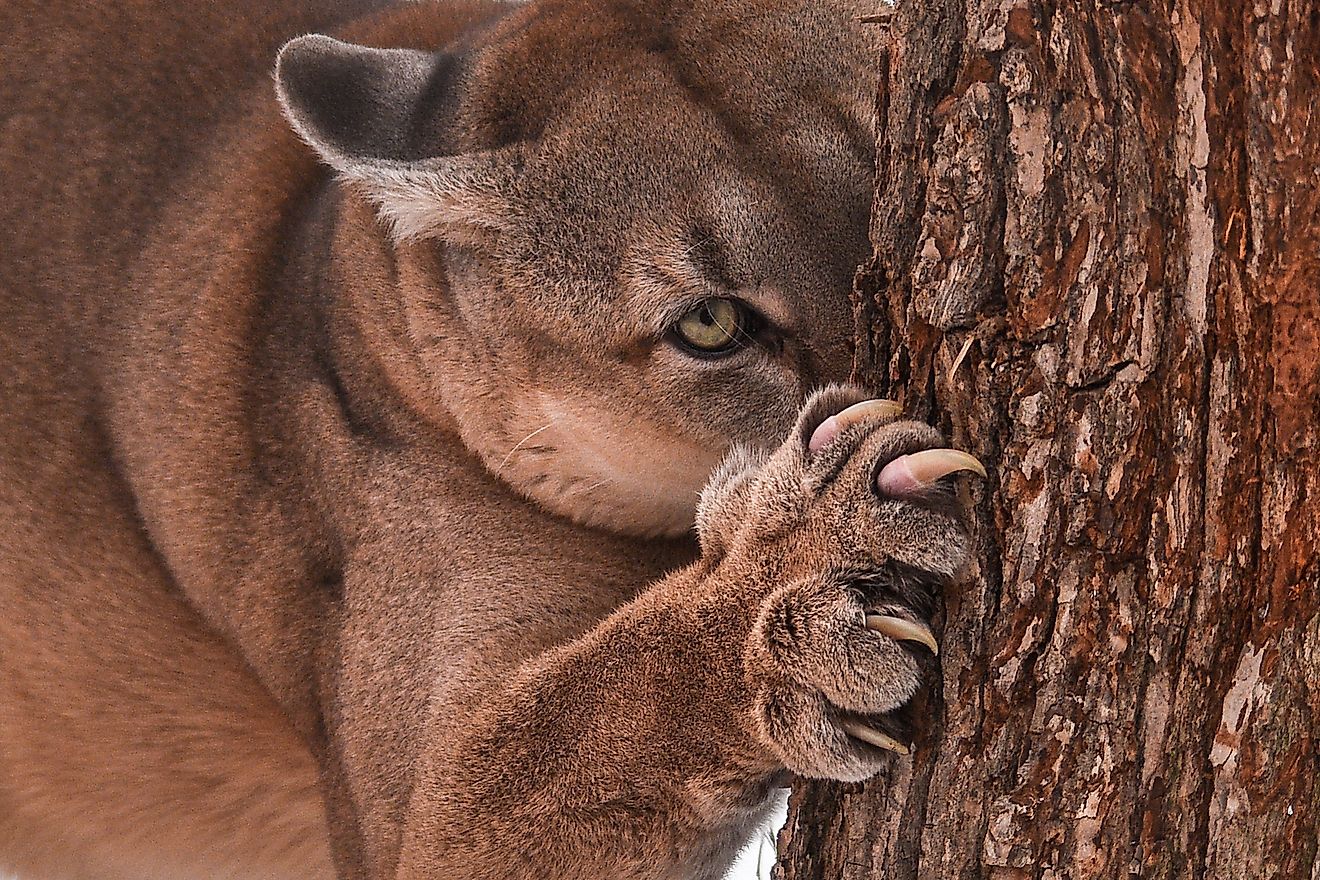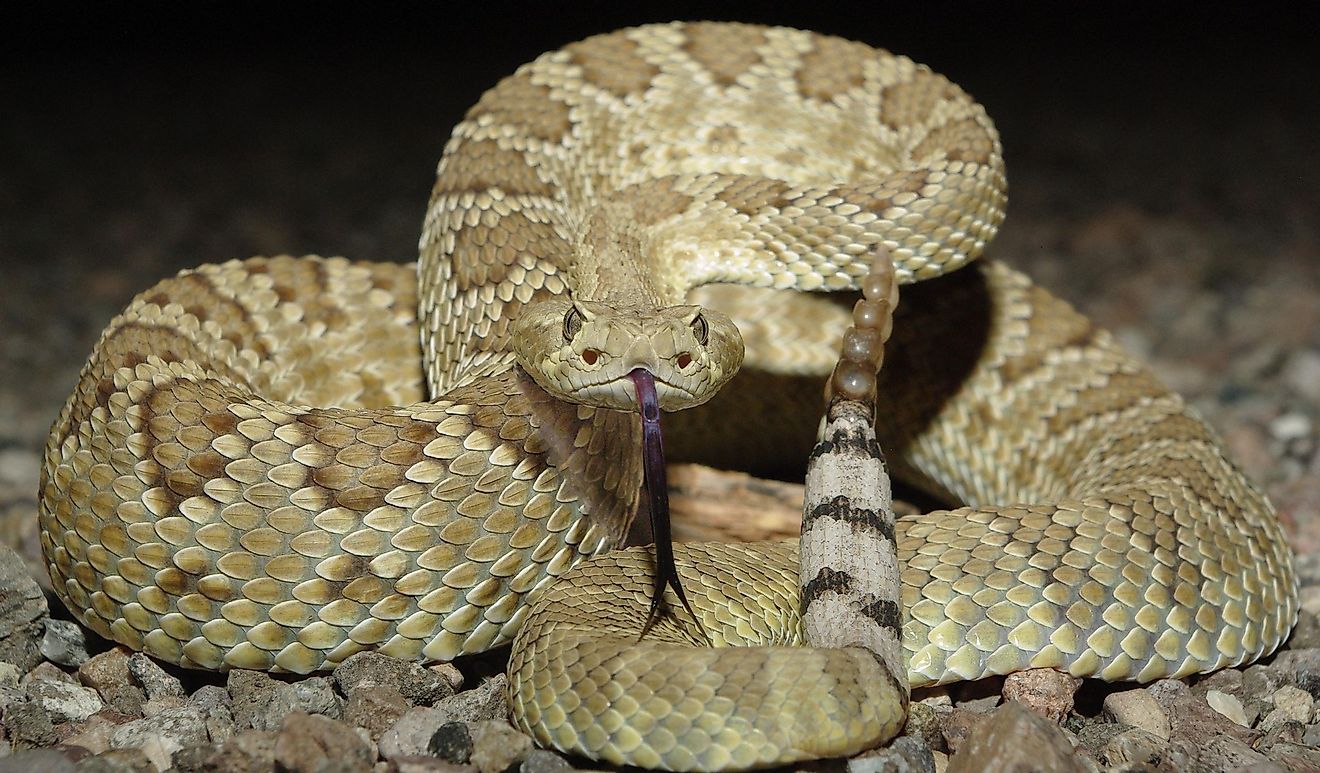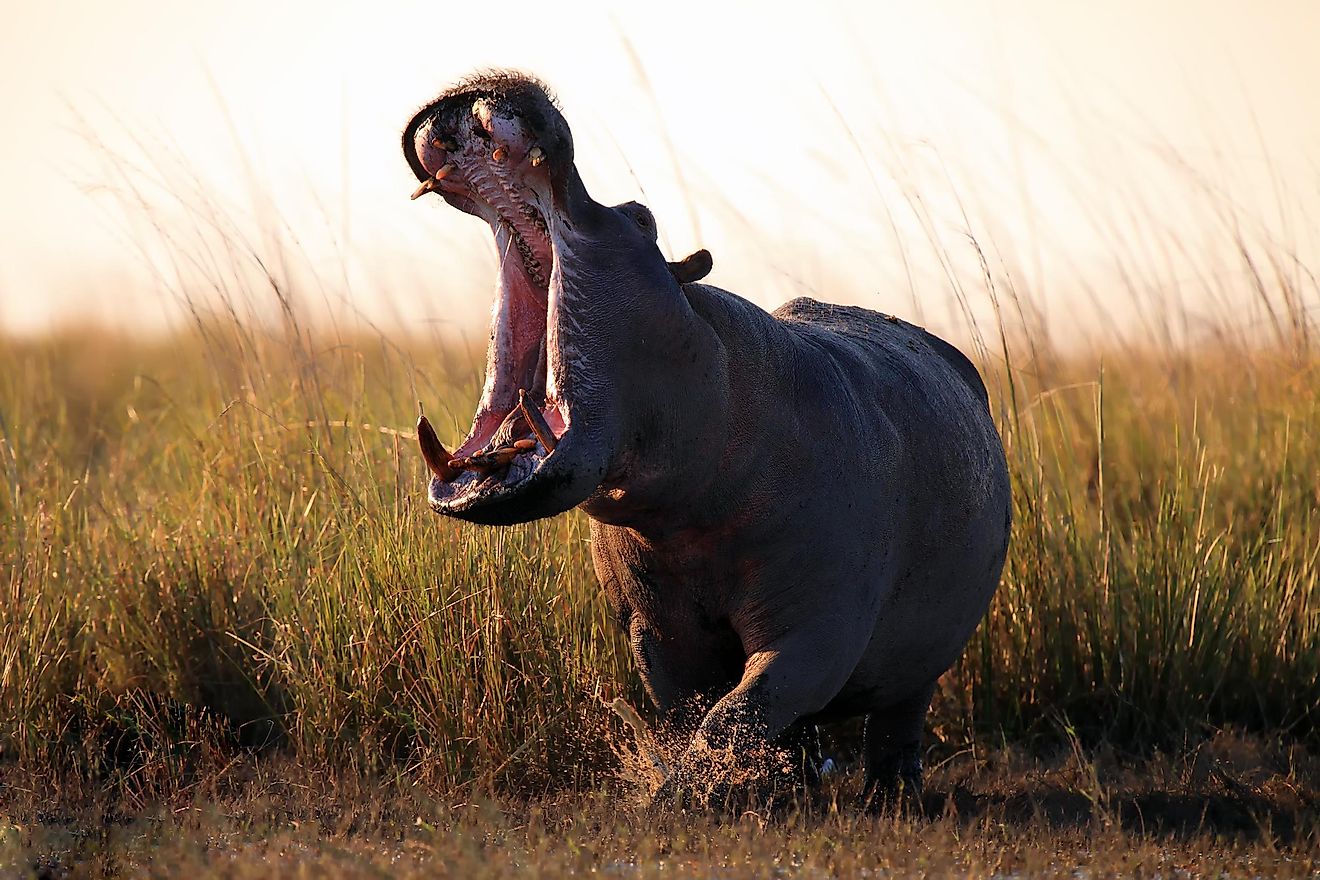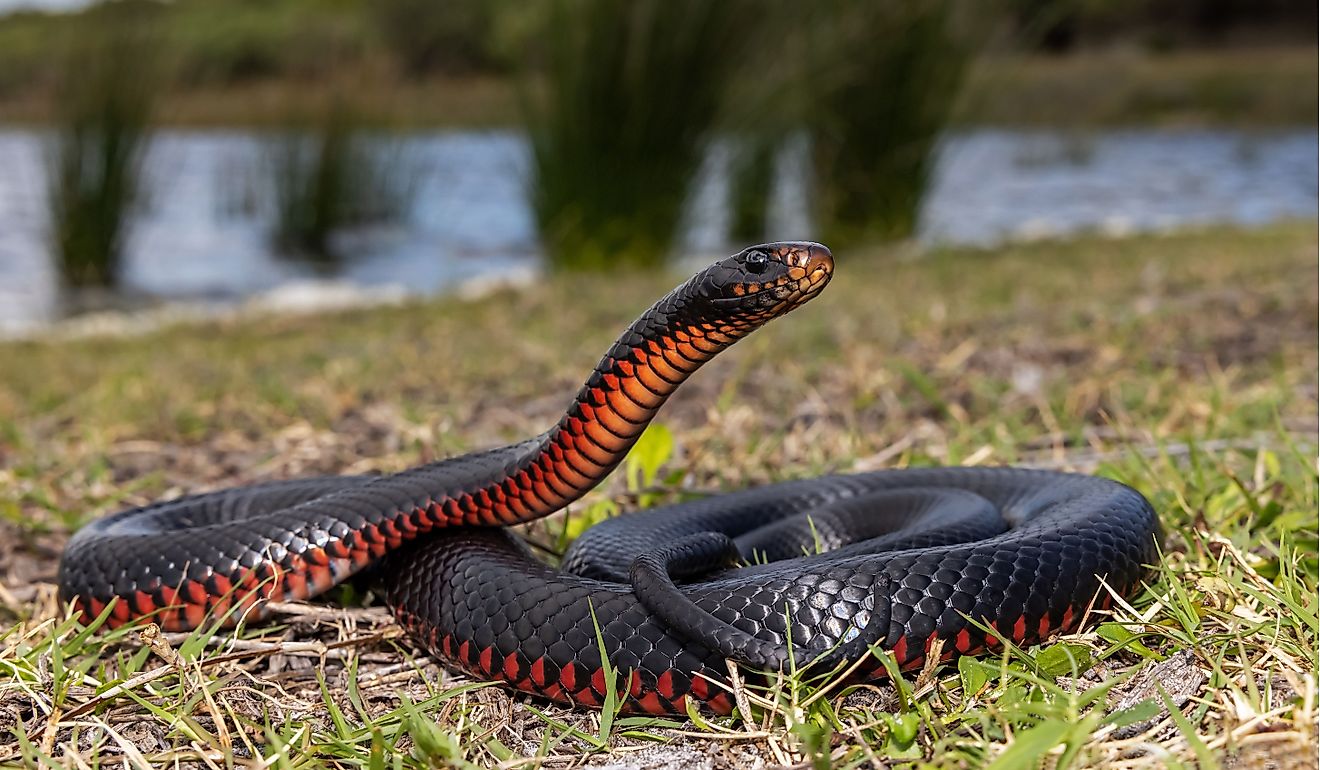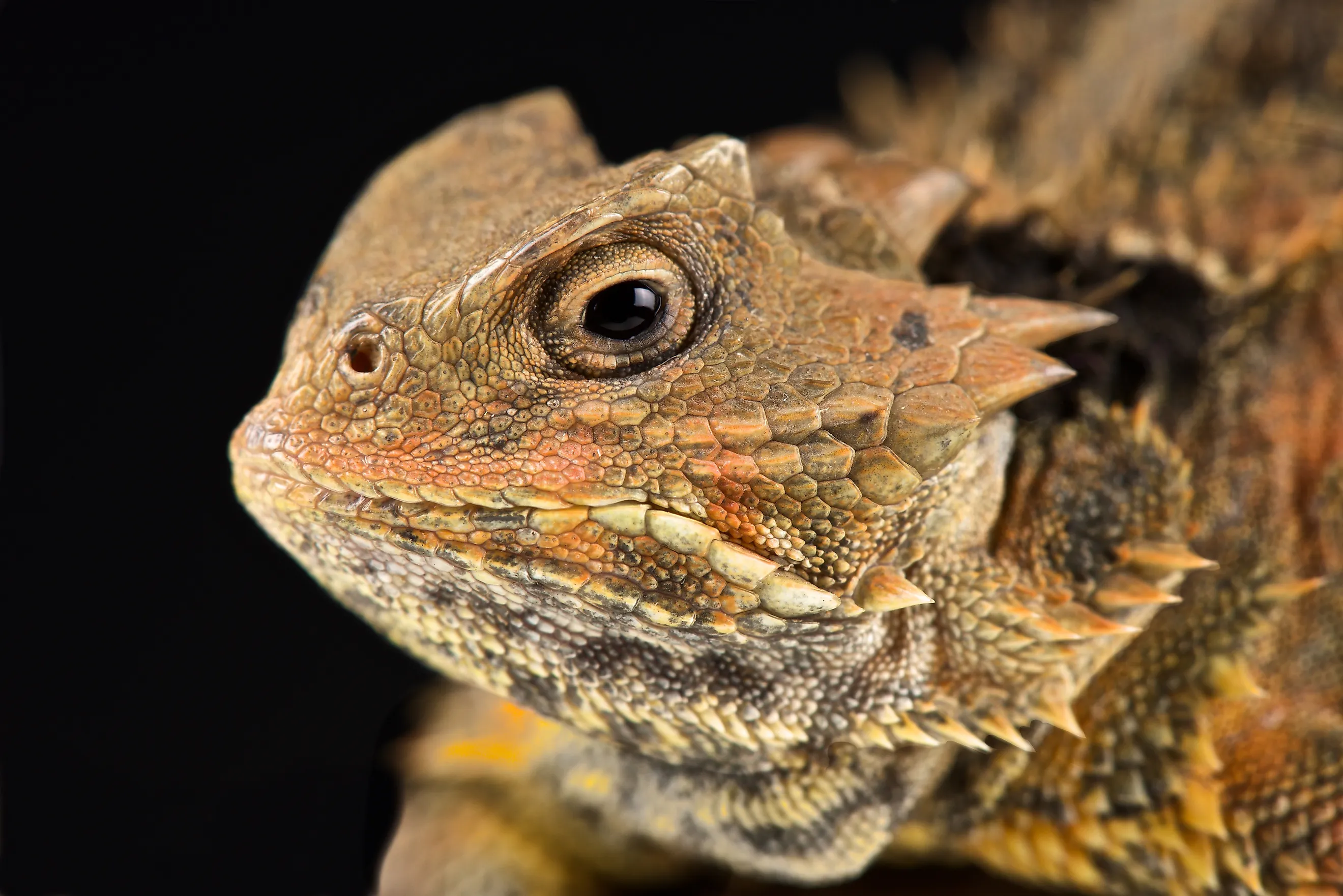
The Lizard That Aims From Its Eyes
From immortal jellyfish to moles that can swallow prey in a tenth of a second, the animal kingdom is a world of unique quirks and features. Among them is a reptile with the ability to aim and shoot streams of blood out of its eyes. That’s right! The horned lizard is a North American lizard with a dinosaur-like appearance and a modern weapon. It can squirt a strong stream of bright red blood out of its eyes to confuse and deter predators up to five feet (1.5 meters) away. Along with this, the lizard has plenty of interesting features, from the ability to puff up to clever camouflage. This article delves into the horned lizard, its blood shooting ability, and everything that makes this reptile so awesome.
About The Horned Lizard

The horned lizard is a genus of lizards found in North America. Also known as the horny toad, their generic name, Phrynosoma, means toad-bodied, and is an indication of the plump and rounded bodies of these lizards. Along with this, they have a flat shape and come in a variety of color patterns, including beige, tan, and gray, often with darker markings on their back. This color pattern is great for camouflage and allows them to blend in with soil, rocks, and vegetation. These reptiles also have a crown of horns on their head, hence their common name. They can have anywhere from two to many horns, depending on the species, and adults typically reach lengths of 3 to 5 inches (7.5 to 13 cm) from snout to vent.
While the horns on their heads are real, horned lizards also appear to have horn-like projections throughout their body. These are actually modified reptile scales that have adapted to reduce water loss through the skin. Their diet is also quite unique, and it mainly consists of venomous ants, crickets, grasshoppers, and invertebrates. While hunting is one side of things, their true super power lies in their ability to avoid being hunted.
Ability To Shoot Blood From Its Eyes
Although quite intimidating at first glance due to their rugged appearance, horned lizards are quite small, meaning they have to deal with many predators like dogs, snakes, cars, and birds. Thankfully, these lizards have a secret weapon to avoid predators, and it's one of the animal kingdom’s most unique (and slightly creepy). At least eight species of horned lizards are able to shoot or squirt an aimed stream of blood at will. That’s right! The blood squirts from the corner of the eyes and can reach a distance of up to 5 feet (1.5 meters), around ten times their body length. Along with shocking predators, the blood is full of toxins and has a foul taste, which is highly effective against cats and dogs.
Science Behind The Blood “Cannon”
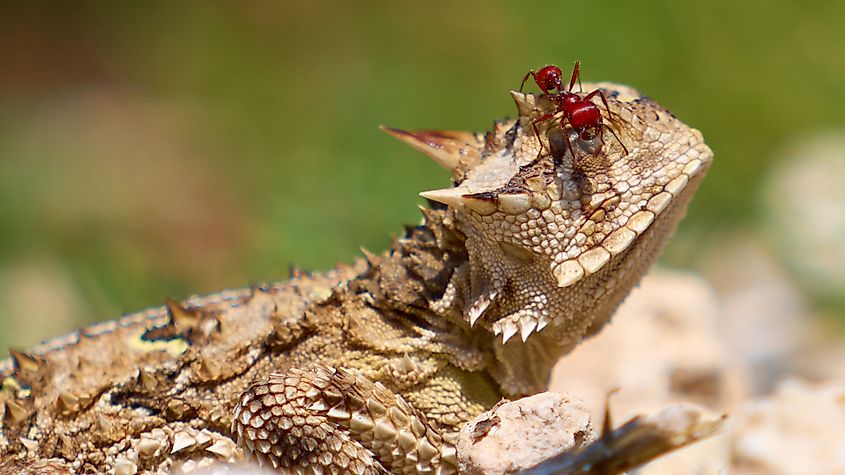
As cool and complex as this blood “cannon” may seem, the science behind it is actually quite simple. When threatened, these lizards start by restricting the blood flow to their head. This leads to an increase in blood pressure throughout the body and ruptures in the small vessels around the eyelids. As they rupture, blood escapes through the side of the eyes and out in an aimed stream. As for the toxicity of this blood, most scientists believe it is due to their diet of venomous ants, but there is still some debate as to why horned lizards have such foul-tasting blood.
Other Unique Features
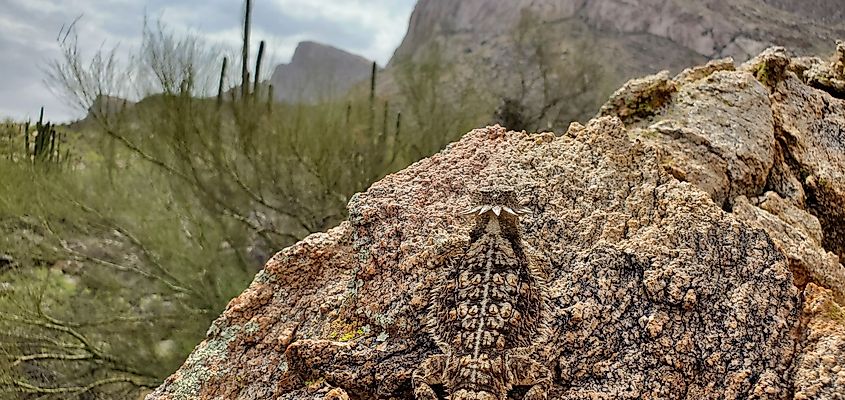
Along with the ability to shoot blood, horned lizards have more tricks up their sleeve to avoid predators. These small lizards’ first line of defence is their camouflage, which allows them to hide among rocks, leaves, and branches. Their brown/grey coloration and uneven skin blends them perfectly with rocky terrain, and many predators won’t even notice the lizard nearby, especially as they tend to stop moving. They are also excellent diggers, and will burrow into the ground to avoid being caught.
If a predator does notice or attack a horned lizard, their next move is to run away in short and fast bursts while also stopping suddenly. This allows them to create distance while also confusing predators who may be chasing at full speed. If this doesn't work, a horned lizard will puff up its body to appear larger and more horned. Along with intimidating smaller animals, this makes them less appealing as a meal. If all else fails, the last two options are to shoot blood or stretch and drive its body into the ground in a manner that makes it hard to be eaten.
Population Decline
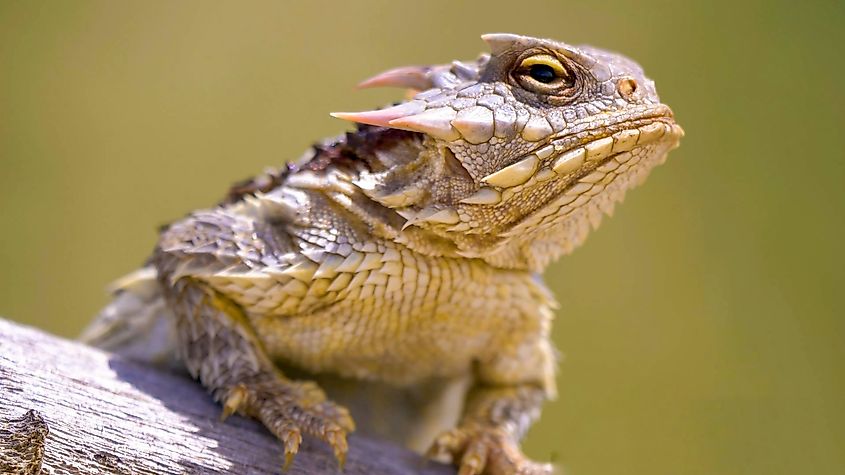
Despite its amazing defence systems and adaptations, the horned lizard has seen a prominent population decline over the past few years. As surprising as it may be, these lizards are struggling to thrive due to habitat loss, non-native grass growth, the use of pesticides, an invasion of fire ants, and an increase in predation by cats and dogs. The University of Texas noted that the population is rapidly declining, and some species, like the Texas horned lizard (Phynosoma cornutum), have lost nearly half their geographic range.
The Lizard That Can Shoot From Its Eyes
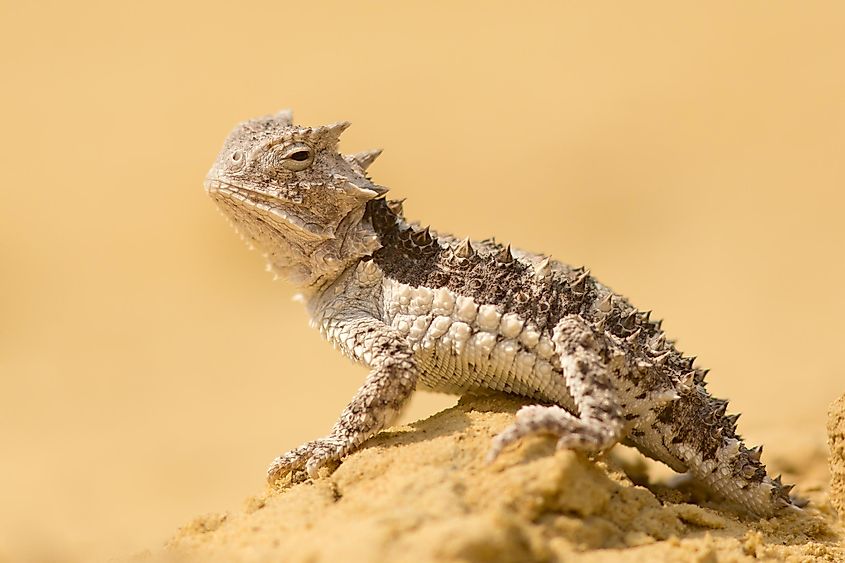
The horned lizard is more than just a quirky reptile with an unusual defense. Its unique adaptations, from expert camouflage to its incredible blood-squirting trick, show how wildlife can evolve in surprising ways to survive. Despite these natural defenses, horned lizards face growing threats from habitat loss and predators introduced by humans. Understanding and protecting these fascinating creatures helps ensure that future generations can witness one of nature’s most unusual survival stories up close.
